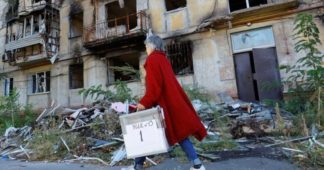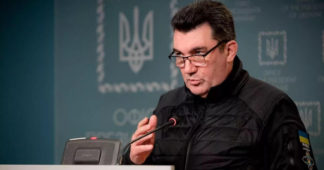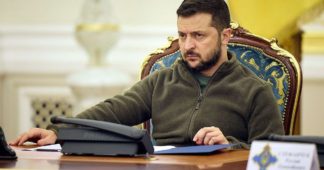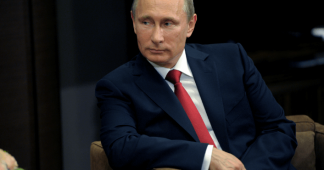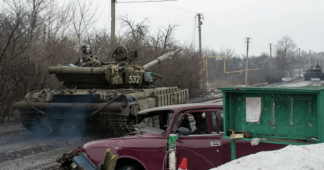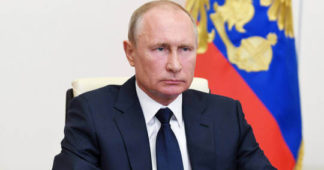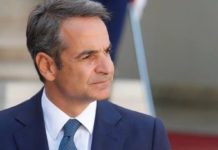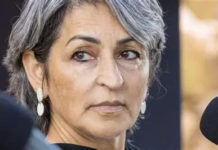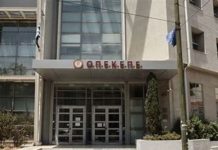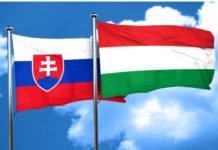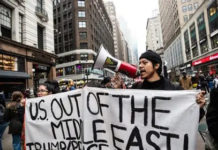The Ukrainian authorities even before the 2014 coup were always very wary of any referendum initiatives or even polls addressing ‘uncomfortable’ issues of language, culture, economic or social policies.
By Dmitri Kovalevich
26 Sep 2023
On September 10, elections to regional and municipal assemblies were held across the Russian Federation. For the first time, they were held under Russian law in the two Donbass republics of Donetsk and Lugansk which formally became part of the Russian Federation in February 2022. Elections also took place in the two ‘new territories’, as they are called in Russia, of the Russian-controlled parts of Zaporizhzhya and Kherson regions (that is, the areas of those two regions lying south and east of the Dnieper River).
Ukraine gov’t does not like polls, referendums or even a census of its population
The governing regime in Ukraine as well as the Western countries allied with it condemned and refused to recognize the elections in the Donbass republics and new territories, just as they had earlier refused to recognize referendums in 2022 in all four territories to join the Russian Federation. International observers were threatened with all kinds of sanctions if they dared to witness and report the voting, as many of the inhabitants of the regions would wish. On election day, September 10, the Ukrainian army shelled polling stations, destroying election materials and voting infrastructure. Officially, Ukraine treats participation in these elections as “high treason”.
The Ukrainian authorities even before the 2014 coup were always very wary of any referendum initiatives or even polls addressing ‘uncomfortable’ issues of language, culture, economic or social policies. That’s because results were predictable in opposing the official, ultranationalist course of successive Ukrainian governments since secession from the Soviet Union in 1990/91. For similar reasons, Ukraine has not even conducted a census since 2001, rebuffing urgent recommendations by the United Nations to conduct one. The reason for this refusal is that a census would have demonstrated a sharp population decline caused by the disastrous political and economic course of post-Soviet Ukraine.
Fictious populist parties fill a void and undermine genuine democracy
In elections since 1991, it has been common to create fictitious populist parties that can ‘catch a wave’ and score surprise election results. This was the case in 2021 with the ‘Servant of the People’ party created by Volodymyr Zelensky and his cohorts. He and his ‘party’ swept the 2021 elections to the presidency and to the legislature (Rada). They did so by flirting with Russian-speaking voters as well as other voters opposed to, or uneasy with, the anti-Russia policies brought to the fore in Ukraine by the 2014 coup. They promised socially oriented policies and probes towards peace with Russia, but once in power immediately changed course to impose neoliberal policies, urge more NATO military intervention directed against Russia, and continue promoting right-wing, Ukrainian nationalism.
The actual absence of real democracy in post-Soviet Ukraine was always quietly approved by the Western countries. They have long simply slapped the label ‘democratic’ on the most dictatorial of regimes so long as they submit to a status of ‘ally’, that is underling, of the United States and NATO. Accordingly, any free election or referendum would not meet the standards of Western-style “democracy” if the results contradicted U.S. and NATO policies. Should such results occur, groups of pro-Western vigilantes and paramilitaries representing tiny portions of the electorate would be mobilized to conduct ‘color revolutions’ against elected officials getting in the way.
Had there been referendums on important issues in Ukraine before the upheavals and coup of late 2013/early 2014, the country would very likely have avoided the eight years of bloody civil war waged by Kiev against the Donbass republics and avoided the Russian military intervention begun on February 24, 2022. The world would not today be on the brink of nuclear conflict. Ukraine would have remained a neutral country with competing interests and allegiances being balanced; pro-socialist sentiments that are widespread in the east of the country would balance against the pro-capitalist and pro-European Union sentiments widely prevalent in the west. The country’s economic relations would be balanced between the West and the Russia-led economic bloc to the east, while its multicultural and multilingual character would be intact. But it was precisely this genuine model of democracy that was done away with because it contradicted the fraudulent Western brand of ‘democracy’.
Moldova threatened by Western-style ‘democracy’
Something similar to the Ukrainian political crisis is now rising again in neighboring Moldova (population 2.6 million). Transnistria (the Transnistrian Moldovan Republic, population app. 500,000) seceded from greater Moldova in the 1990s in reaction to Moldovan authorities embracing nationalism and pursuing cooperation with NATO.
This year, elections took place in the Autonomous Republic of Gagauzia (population app. 135,000). Located in the south of Moldova with its capital in the town of Comrat, the republic is predominantly populated by Gagauz, a Turkic people. Pro-Soviet sentiments have always been strong there.
The election of the Bashkan (president) of autonomous Gagauzia was won by the female Gagauz leader Eugenia Gutsol. But Moldovan President Maia Sandu has refused to recognize the vote, dismissing Gutsol for being “pro-Russian” and opposed to a pro-NATO course. In September, President Sandu declared that power in Gagauzia was now “in the hands of a pro-Russian criminal group”. Prime Minister Dorin Recean added that his cabinet would not work with a politician who favored strengthening ties with Russia. Thus, the non-recognition of an inconvenient vote threatens tiny Moldova with another conflict with an entire people, the Gagauz.
Transnistria is mostly populated by Russian speakers, with a significant Ukrainian population in its north. Gagauzia has a large ethnic Bulgarian population in its southeast. It is obvious that the policy of ethnic nationalism being increasingly promoted by the central government in the capital could only lead to the political collapse of the country.
But let us return to the elections in former Ukrainian territories. During the regional elections across Russia on September 10, including the new, former Ukraine territories, little attention was paid to issues surrounding the military intervention in Ukraine and geopolitics. After all, these were elections to municipal and regional bodies, not for the presidency and the national government. Alexei Makarkin of the Russian Center for Political Technologies summarized the election campaign in the magazine Profile, writing, “The majority of voters would like to live their usual lives, while the candidates, of course, try their best to avoid interfering with this.”
(One of the unexpected moments of the regional elections in Russia was the fact that American MMA boxer and anarcho-communist Jeff Monson, who has supported Donetsk in its conflict with Kiev and has become a Russian citizen, was elected as a deputy to the Kurultai (legislative assembly) of Bashkortostan, a Muslim autonomous republic of the Russian Federation. Monson had earlier condemned U.S. government policy and capitalism in general.)
Elections in Russia’s two Donbass republics and its two new territories
The four new regions of the Russian Federation held elections on September 10 with the rest of the country. Vladimir Putin’s United Russia party won the overwhelming majority of votes everywhere, from 74 percent to 83 percent. Second and third places were shared by the Communist Party of the Russian Federation and the Liberal-Democratic Party. The Party of Just Russia (social democrats) placed in fourth place everywhere except Zaporizhzhya region where it finished third, displacing the Communist Party.
The Donetsk Republic elected a regional assembly (‘Peoples Council’) of 90 deputies while the Lugansk Republic elected 50 deputies to a similarly named assembly. Zaporizhzhya elected 40 deputies to its ‘Legislative Assembly’, while Kherson elected 36 deputies to its ‘Regional Duma’.
Residents of the new regions voted using Russian or Ukrainian passports as identification; displaced people from these regions living in other regions of the Russian Federation voted similarly. According to the Russian Central Electoral Committee, a total of 1,313 people were registered as candidates for regional parliaments in the new regions as of August 31. Ukrainian media tried to discredit the candidates by emphasizing their “low” social background. The vast majority of candidates in these regions were from the working classes. Many were housewives, students, pensioners, and unemployed, which was ridiculed by Kyiv.
Among the well-known Ukrainian personalities who ran for office were the acting leaders of the Zaporizhzhya region (Yevgeny Balitsky), Kherson region (Vladimir Saldo), and the incumbent leaders of the two Donbass republics. Candidate Dmytro Tabachnyk in Zaporizhzhya region was the head of the administration of former Ukraine president Leonid Kuchma (1994 to 2005) and also a former education minister (2010 to 2014).
Many of the candidates on the lists were previously members of parties banned in Ukraine, including the Communist Party of Ukraine, the Opposition Platform, the Sharij Party, and the Socialist Party.
Voter turnout in the new regions (former Ukrainian regions) was much higher than in the existing Russian regions. While the average turnout in the Russian Federation was 43.5%, in the new territories it ranged from 65% to 94%. In the Donetsk Republic, it was 94.34% and in the Lugansk Republic, it was 72.53%. Turnout in the Kherson region was 65.14%, while in the Zaporizhzhya region, it was about 70%. High voter turnout is also characteristic of Crimea since 2014.
The new regions of the Russian Federation are, as a rule, more loyal to Moscow than to Russian regions per se. Voting there under new and different laws for new and different parties as well as fears of possible retribution by Ukraine may have lowered slightly the turnout.
Predictably, Ukraine and the Western countries have dismissed the election figures. No official representatives from there were willing to observe and monitor the voting and counting process. The Russian Federation responded to disparaging Western comments by saying that the elections were an “internal” affair.
In Ukraine itself, elections are not likely to be held soon. The head of Ukraine’s National Security and Defense Council, Alexey Danilov, warned earlier in September that elections in Ukraine could be used by Russia for “destabilization”. “The holding of elections in the conditions in which our country finds itself is simply an issue of internal destabilization,” Danilov said. He also said that elections require discussion and debate, and public political discussion is impossible in today’s Ukraine because those in Ukraine holding pro-Russian views have not yet been purged from all institutions of government and the state.
Corruption remains intractable in Ukraine
The reluctance to hold elections is related to Zelensky’s falling ratings. A poll published in Ukraine in September showed that 78 percent of Ukrainians believe that Zelensky is personally responsible for corruption in the government and local administrations. The New York Times recently published an analysis of Ukraine headlines ‘Corruption is an existential threat to Ukraine, and Ukrainians know it’.
Corruption scandals in Ukraine do not cease for a single day. Entire shipments of humanitarian aid have been reported stolen. Payment of large bribes to avoid obligatory military service or in order to flee abroad is common. The military often purchases food and other supplies at much higher prices than prevailing market prices. Only recently in the Kiev region, the inoperative Trilessky distillery in the city of Zaporizhzhia was sold for the equivalent of US$176 by Ukraine’s State Property Fund. The sale includes adjoining land of 104 hectares containing warehouses, fuel oil facilities, a locomotive depot, auto repair shop, cellars, workshops, alcohol storage facilities, and even a summer cinema.
Zelensky is considered by many Ukrainians as personally responsible for all these problems, in part due to his earlier actions in effectively suppressing the operations of local self-government in the country, replacing elected bodies in a number of regions with military administrations appointed by him. The elected mayors of a number of cities were removed from power under various pretexts, described in detail by no less than the Carnegie Endowment for International Peace, a leading U.S. think tank in Washington.
The post-2014 government and state in Ukraine is highly centralized government with few real powers exercised by local or regional governments. Western media chooses to completely overlook this. The Carnegie analysis explains, “The government is increasingly undermining the very idea of local self-government.” It continues, “The standoff between the central government and the mayors in Ukraine has been going on since the 2020 local elections, the last major vote before Russia’s invasion. Back then, President Volodymyr Zelensky’s Servant of the People party was defeated in the mayoral elections in key cities.”
The authoritarianism and dictatorship that Zelensky has built in Ukraine has a flip side working very much to its detriment and that of its allies. The Ukrainian Telegram channel ‘Kriogen’ explains: “With such an unprecedented concentration of power in the hands of one person and one political force, there is no one else to whom to shift responsibility.”
Notwithstanding all the evidence to the contrary, Western governments and media continue to present Ukraine as a democracy while dismissing Russia and its elected local, regional and national governments as “authoritarian”.
We remind our readers that publication of articles on our site does not mean that we agree with what is written. Our policy is to publish anything which we consider of interest, so as to assist our readers in forming their opinions. Sometimes we even publish articles with which we totally disagree, since we believe it is important for our readers to be informed on as wide a spectrum of views as possible.
